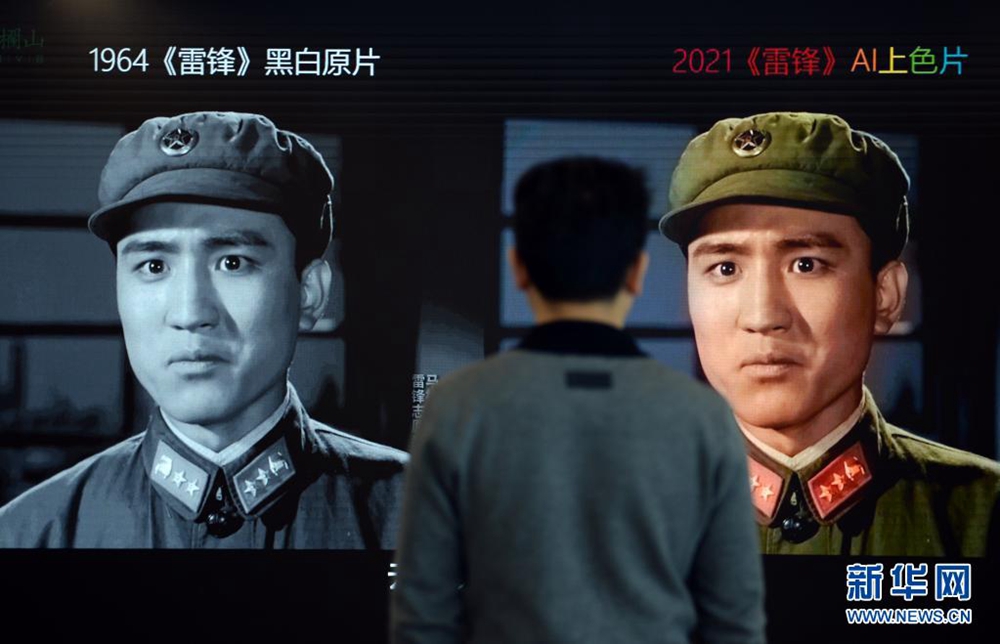AI plus manual work restores old films

An old film restorer checks the details of a restored movie in front of a big screen at the Malanshan Video Cultural and Creative Industrial Park in Changsha, capital of South China's Changsha province, April 8, 2023. [Xinhua/Photo]
Film restoration is a complex task that relies heavily on technological support. In recent years, emerging technologies like artificial intelligence (AI) have been widely used in restoring old films.
In the digital restoration lab of the China Film Archive, the work of two restorers differs from that of others. They use pre-developed algorithms to identify the shaky segments in a film, manually adjust the code, and then execute the script to improve the picture quality.
"Every restoration require different scripts, so each film presents unique challenges. Our programmers must tailor AI solutions based on the film's conditions," said Wang Zheng, senior engineer at China Film Archive.
Film restoration is laden with repetitive tasks of dealing with scratches, blemishes, jitters, mold stains and others. The tasks consume most of the restorers' time and energy, often impeding the overall progress of restoration projects. Recognizing this hurdle, China Film Archive introduced the AI restoration technology five years ago, making it more intelligent and efficient through rounds of improvement.
In October 2021, The Eternal Waves, the first 4K color film restored from a black-and-white version, re-debuted in theaters. It garnered a box office of 3.159 million yuan (about 433,821 U.S. dollars), surpassing the earnings of other re-released classics without AI restoration. This marked a breakthrough in China Film Archive's leveraging AI technology.
Restoring the color version of The Eternal Waves remains vivid in the mind of Li Tao, director of the production department of China Film Archive. Li is also a nationally recognized filmmaker.
"A total of 165,000 pictures were restored. By applying AI programs, we made dozens of training sets for specific scenes and established nearly 8,000 reference keyframes to categorize scenes into exteriors, interiors, streets, and lighting conditions,” said Li.
Li added the trained AI programs could solve most problems, yet meticulous manual intervention was needed to optimize details and improve precision.
Furthermore, China Film Archive's restoration team collaborated with experts from film, television, military, and other domains to undertake archival research in depth.
"What was the standard military uniform depicted in the film? What colors were popular for Shanghai's cheongsam at the time? How was Peace Hotel's interior decorated? Even the porcelain in the corridor—was it enamel or blue-and-white? These queries require us to delve deep into history," said Li.
One might doubt whether AI could eventually replace manual restoration. Wang shared his perspective: "AI restoration won't totally replace manual work but rather complement and elevate it. AI shoulders the bulk of repetitive tasks, but the workload of film restorers still remains heavy. Now they focus on more advanced and innovative tasks."
Source: Guang Ming Daily; trans-editing by Guo Yao








